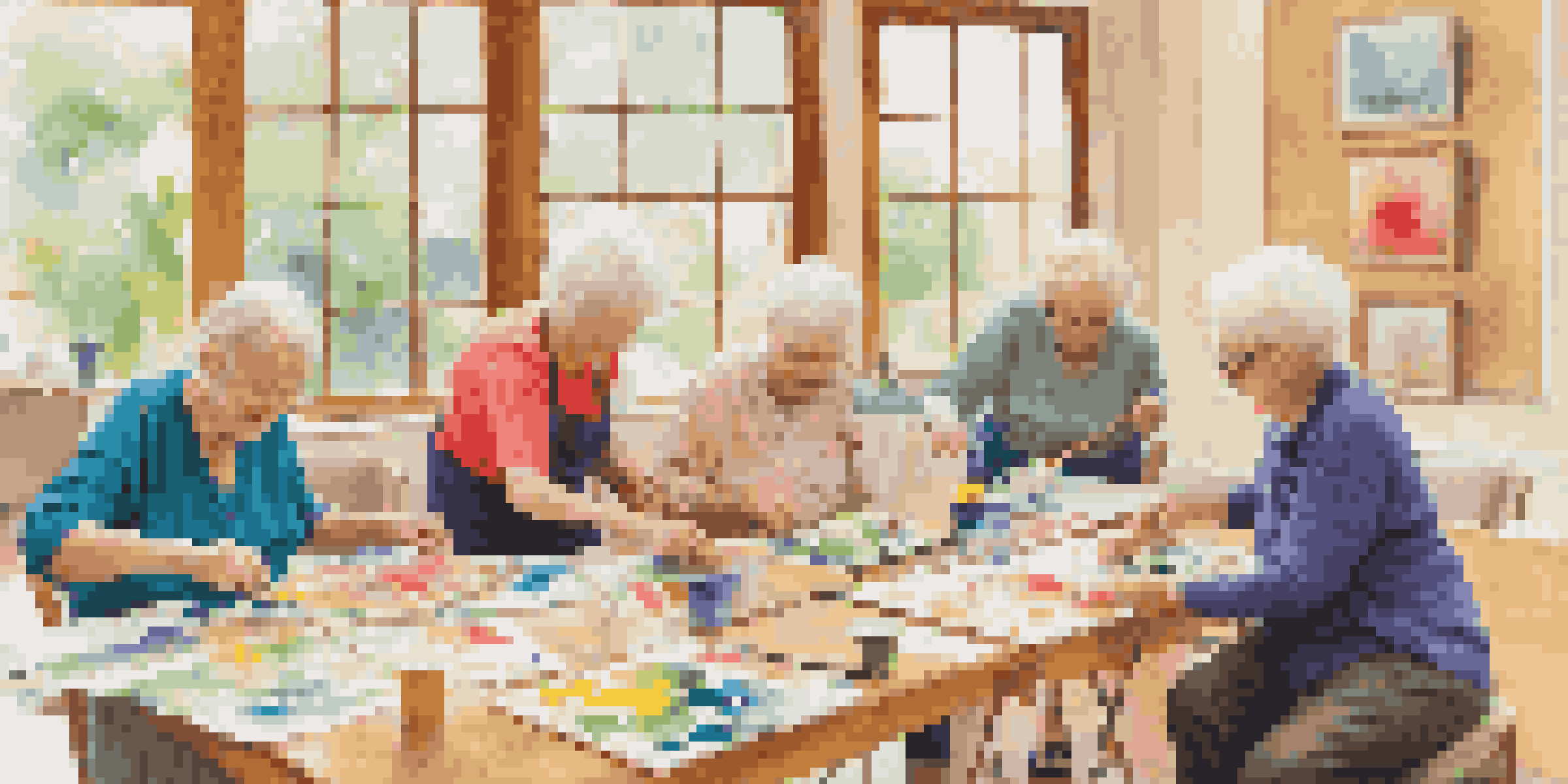Art Therapy for Seniors: Addressing Isolation and Loneliness

Understanding Isolation and Loneliness in Seniors
Isolation and loneliness are significant issues faced by many seniors, often exacerbated by limited mobility or loss of loved ones. These feelings can lead to serious emotional and physical health problems, impacting overall well-being. It's essential to recognize that while isolation is a physical state, loneliness is a deep emotional experience that can persist even in the presence of others.
What is Art Therapy and Its Benefits?
Art therapy is a therapeutic approach that uses creative expression to support emotional well-being. By engaging in activities like painting, drawing, or crafting, seniors can explore their feelings in a safe and supportive environment. This process not only promotes self-expression but also fosters a sense of accomplishment and boosts self-esteem.
Isolation vs. Loneliness Explained
Understanding the difference between physical isolation and emotional loneliness is crucial for addressing the well-being of seniors.
How Art Therapy Fosters Social Connections
One of the remarkable benefits of art therapy is its ability to connect individuals through shared experiences. Group art sessions create opportunities for seniors to interact, share their stories, and bond over their creative processes. These connections can significantly reduce feelings of isolation, as participants find common ground and develop friendships.
Art Therapy Activities Tailored for Seniors
Art therapy offers a variety of activities that are adaptable to different abilities and interests. Simple projects like finger painting or collage-making can be incredibly therapeutic, allowing seniors to express themselves without the pressure of perfection. These activities not only provide a creative outlet but also stimulate cognitive function and motor skills.
Art Therapy Promotes Connection
Engaging in art therapy fosters social connections among seniors, helping to reduce feelings of isolation through shared creative experiences.
Success Stories: Real-Life Impact of Art Therapy
Many seniors have found renewed joy and connection through art therapy programs. For example, a local community center reported that participants in their art therapy class developed strong friendships, which led to regular social gatherings outside of class. Such stories highlight the transformative power of creative expression in combating isolation and loneliness.
The Role of Caregivers in Encouraging Participation
Caregivers play a crucial role in encouraging seniors to engage in art therapy. By facilitating access to classes or providing materials at home, caregivers can help spark interest and participation. Additionally, they can join in the activities, creating a shared experience that strengthens bonds and encourages communication.
Caregivers Encourage Participation
Caregivers play a vital role in promoting art therapy for seniors by facilitating access and joining in activities to strengthen bonds.
Finding Art Therapy Programs for Seniors
Many communities offer art therapy programs specifically designed for seniors, often through local art centers or health organizations. Online resources can also provide information about virtual classes, making it easier for seniors to participate from home. Exploring these options can open doors to meaningful engagement and creative expression.
Conclusion: The Lasting Impact of Art Therapy
Art therapy can be a powerful tool in addressing the challenges of isolation and loneliness in seniors. By fostering creativity and connection, it not only enhances emotional well-being but also enriches lives. Encouraging seniors to explore art therapy can lead to transformative experiences and a renewed sense of purpose.